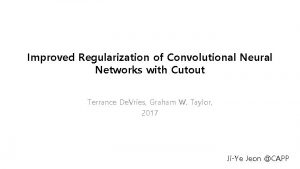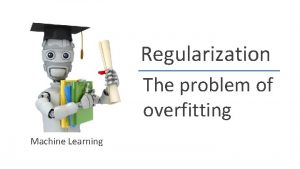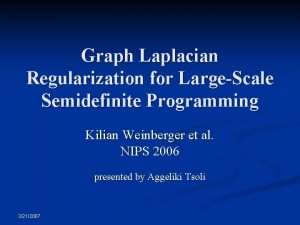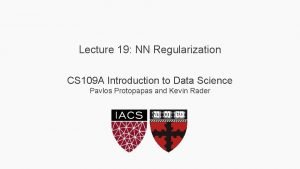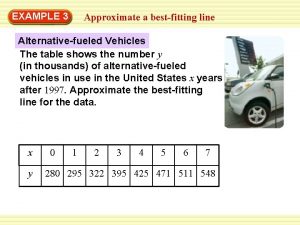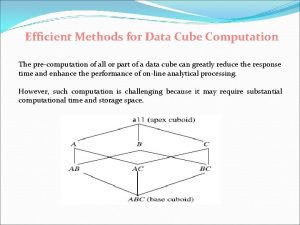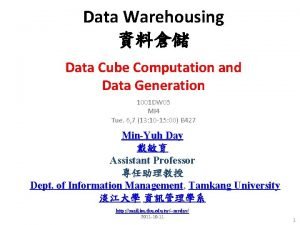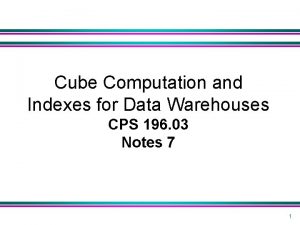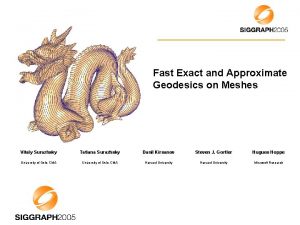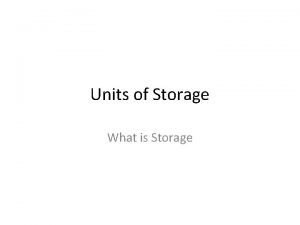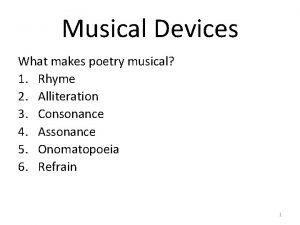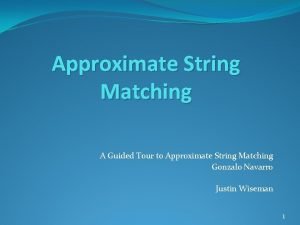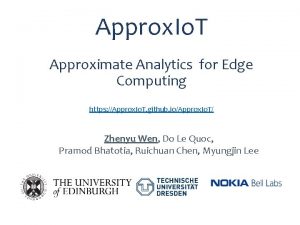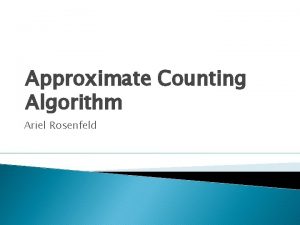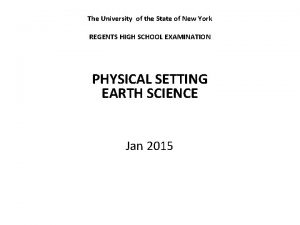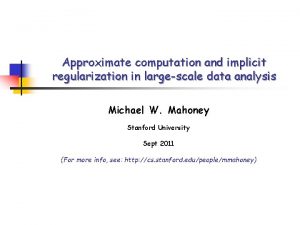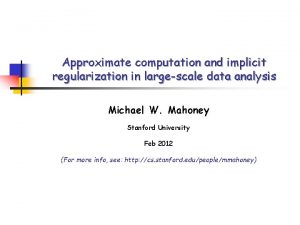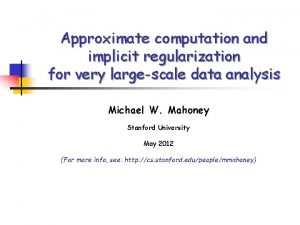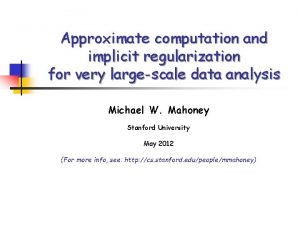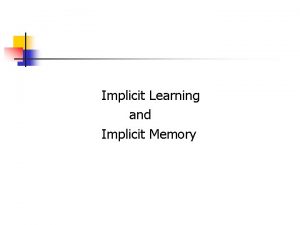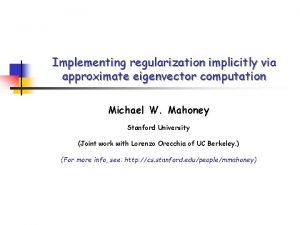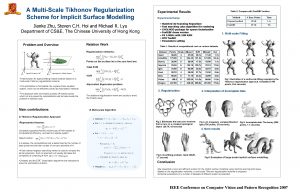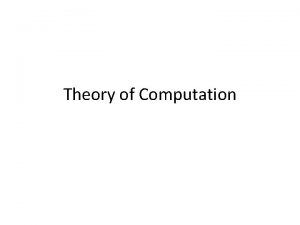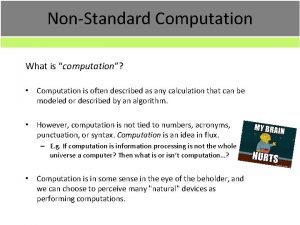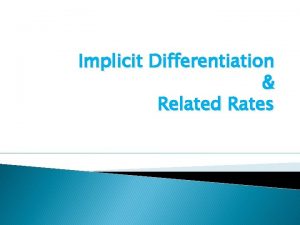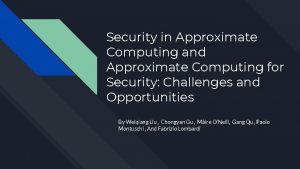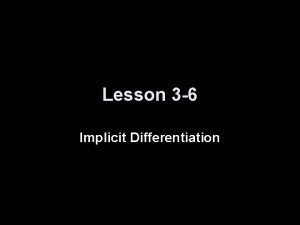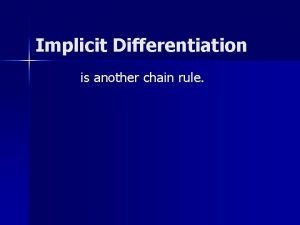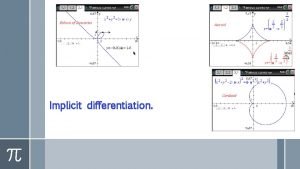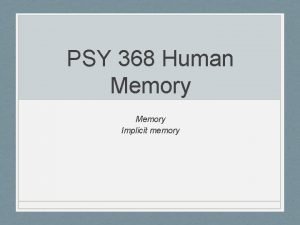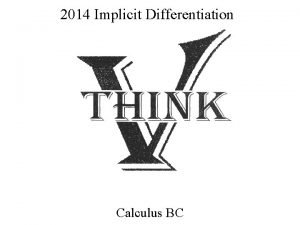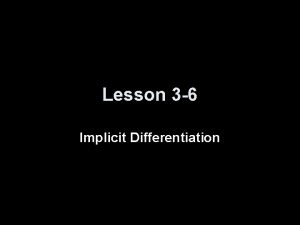Approximate computation and implicit regularization in largescale data



















- Slides: 19

Approximate computation and implicit regularization in large-scale data analysis Michael W. Mahoney Stanford University Sept 2011 (For more info, see: http: //cs. stanford. edu/people/mmahoney)

Motivating observation Theory of NP-completeness is a very useful theory • captures qualitative notion of “fast, ” provides an qualitative guidance to how algorithms perform in practice, etc. • LP, simplex, ellipsoid, etc. - the “exception that proves the rule” Theory of Approximation Algorithms is NOT analogously useful • (at least for many machine learning and data analysis problems) • bounds very weak; can’t get constants; dependence on parameters not qualitatively right; does not provide qualitative guidance w. r. t. practice; usually want a vector/graph achieving optimum, bu don’t care about the particular vector/graph; etc.

Start with the conclusions • Modern theory of approximation algorithms is often NOT a useful theory for many large-scale data analysis problem • Approximation algorithms and heuristics often implicitly perform regularization, leading to “more robust” or “better” solutions • Can characterize the regularization properties implicit in worstcase approximation algorithms Take-home message: Solutions of approximation algorithms don’t need to be something we “settle for, ” since they can be “better” than the solution to the original intractable problem

Algorithmic vs. Statistical Perspectives Lambert (2000) Computer Scientists • Data: are a record of everything that happened. • Goal: process the data to find interesting patterns and associations. • Methodology: Develop approximation algorithms under different models of data access since the goal is typically computationally hard. Statisticians (and Natural Scientists) • Data: are a particular random instantiation of an underlying process describing unobserved patterns in the world. • Goal: is to extract information about the world from noisy data. • Methodology: Make inferences (perhaps about unseen events) by positing a model that describes the random variability of the data around the deterministic model.

Statistical regularization (1 of 2) Regularization in statistics, ML, and data analysis • arose in integral equation theory to “solve” ill-posed problems • computes a better or more “robust” solution, so better inference • involves making (explicitly or implicitly) assumptions about the data • provides a trade-off between “solution quality” versus “solution niceness” • often, heuristic approximation have regularization properties as a “side effect”

Statistical regularization (2 of 2) Usually implemented in 2 steps: • add a norm constraint (or “geometric capacity control function”) g(x) to objective function f(x) • solve the modified optimization problem x’ = argminx f(x) + g(x) Often, this is a “harder” problem, e. g. , L 1 -regularized L 2 -regression x’ = argminx ||Ax-b||2 + ||x||1

Two main results Big question: Can we formalize the notion that/when approximate computation can implicitly lead to “better” or “more regular” solutions than exact computation? Approximate first nontrivial eigenvector of Laplacian • Three random-walk-based procedures (heat kernel, Page. Rank, truncated lazy random walk) are implicitly solving a regularized optimization exactly! Spectral versus flow-based approximation algorithms for graph partitioning • Theory suggests each should regularize in different ways, and empirical results agree!

Approximating the top eigenvector Basic idea: Given a Laplacian matrix A, • Power method starts with v 0, and iteratively computes vt+1 = Avt / ||Avt||2. • Then, vt = i it vi -> v 1. • If we truncate after (say) 3 or 10 iterations, still have some mixing from other eigen-directions What objective does the exact eigenvector optimize? • Rayleigh quotient R(A, x) = x. TAx /x. Tx, for a vector x. • But can also express this as an SDP, for a SPSD matrix X. • (We will put regularization on this SDP!)

Views of approximate spectral methods Three common procedures (L=Laplacian, and M=r. w. matrix): • Heat Kernel: • Page. Rank: • q-step Lazy Random Walk: Ques: Do these “approximation procedures” exactly optimizing some regularized objective?

Two versions of spectral partitioning VP: R-VP:

Two versions of spectral partitioning VP: SDP: R-VP: R-SDP:

A simple theorem Mahoney and Orecchia (2010) Modification of the usual SDP form of spectral to have regularization (but, on the matrix X, not the vector x).

Three simple corollaries FH(X) = Tr(X log X) - Tr(X) (i. e. , generalized entropy) gives scaled Heat Kernel matrix, with t = FD(X) = -logdet(X) (i. e. , Log-determinant) gives scaled Page. Rank matrix, with t ~ Fp(X) = (1/p)||X||pp (i. e. , matrix p-norm, for p>1) gives Truncated Lazy Random Walk, with ~ Answer: These “approximation procedures” compute regularized versions of the Fiedler vector exactly!

Graph partitioning A family of combinatorial optimization problems - want to partition a graph’s nodes into two sets s. t. : • Not much edge weight across the cut (cut quality) • Both sides contain a lot of nodes Several standard formulations: • Graph bisection (minimum cut with 50 -50 balance) • -balanced bisection (minimum cut with 70 -30 balance) • cutsize/min{|A|, |B|}, or cutsize/(|A||B|) (expansion) • cutsize/min{Vol(A), Vol(B)}, or cutsize/(Vol(A)Vol(B)) (conductance or N-Cuts) All of these formalizations of the bi-criterion are NP-hard!

The “lay of the land” Spectral methods* - compute eigenvectors of associated matrices Local improvement - easily get trapped in local minima, but can be used to clean up other cuts Multi-resolution - view (typically space-like graphs) at multiple size scales Flow-based methods* - single-commodity or multicommodity version of max-flow-min-cut ideas *Comes with strong underlying theory to guide heuristics.

Comparison of “spectral” versus “flow” Spectral: Flow: • Compute an eigenvector • Compute a LP • “Quadratic” worst-case bounds • O(log n) worst-case bounds • Worst-case achieved -- on “long • Worst-case achieved -- on stringy” graphs expanders • Worse-case is “local” property • Worst case is “global” property • Embeds you on a line (or Kn) • Embeds you in L 1 Two methods -- complementary strengths and weaknesses • What we compute is determined at least as much by as the approximation algorithm as by objective function.

Explicit versus implicit geometry Explicitlyimposed geometry • Traditional regularization uses explicit norm constraint to make sure solution vector is “small” and not-too-complex Implicitly-imposed geometry • Approximation algorithms implicitly embed the data in a “nice” metric/geometric place and then round the solution. (X, d) d(x, y) x y f (X’, d’) f(y) f(x)

Regularized and non-regularized communities Conductance of bounding cut Diameter of the cluster Local Spectral Connected Disconnected • Metis+MQI - a Flow-based method (red) gives sets with better conductance. • Local Spectral (blue) gives tighter and more well-rounded sets. Lower is good External/internal conductance

Conclusions • Modern theory of approximation algorithms is often NOT a useful theory for many large-scale data analysis problem • Approximation algorithms and heuristics often implicitly perform regularization, leading to “more robust” or “better” solutions • Can characterize the regularization properties implicit in worstcase approximation algorithms Take-home message: Solutions of approximation algorithms don’t need to be something we “settle for, ” since they can be “better” than the solution to the original intractable problem
 Cutout regularization
Cutout regularization Andrew ng house
Andrew ng house Graph laplacian regularization
Graph laplacian regularization Nn regularization
Nn regularization How to approximate the best fitting line for data
How to approximate the best fitting line for data Efficient methods for data cube computation
Efficient methods for data cube computation Data cube computation
Data cube computation Data cube computation
Data cube computation Fast exact and approximate geodesics on meshes
Fast exact and approximate geodesics on meshes What are kilobytes
What are kilobytes Approximate computing
Approximate computing Board ga,e
Board ga,e Types of narrative poetry
Types of narrative poetry The approximate dates of the classical era in music are
The approximate dates of the classical era in music are What is consonance
What is consonance Approximate analysis
Approximate analysis A guided tour to approximate string matching
A guided tour to approximate string matching Approximate computing
Approximate computing Approximate counting algorithm
Approximate counting algorithm The diagram below represents the placoderm fish
The diagram below represents the placoderm fish
